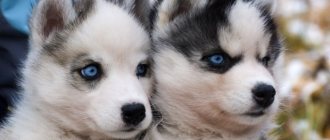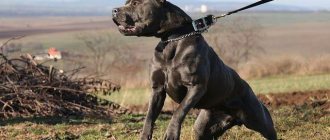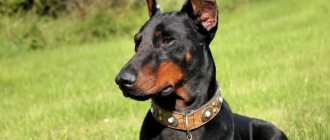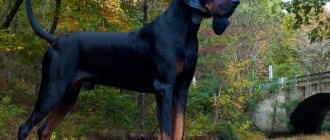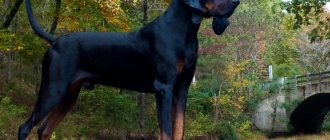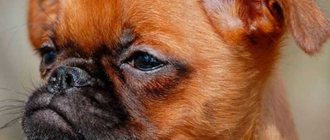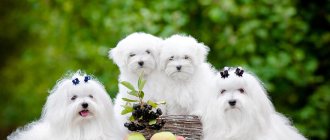- Wild animals
- >>
- Birds
The vulture is the largest predator that floats in the air. When many people mention this bird, they get a feeling of hostility, because the vulture’s menu consists of carrion. In various cartoons, this feathered predator also always plays a negative image. Let's try to study the habits, disposition and lifestyle features of this interesting bird and, perhaps, it will reveal many positive aspects.
Origin of the species and description
Photo: Grif
Vultures have another name - vultures; they are feathered predators of the hawk family, loving places with a warm climate. They should not be confused with American vultures, although they are similar in appearance, they are not close relatives. Hawk vultures are related to vultures, while American vultures are closer to condors.
Since ancient times, vultures have been considered totemic creatures with special amazing properties. When you look at the vulture, you immediately feel his keen, intelligent, purposeful gaze. There are fifteen known varieties of vulture, which differ not only in their place of residence, but in some external characteristics; we will describe some of them.
Video: Vulture
The Bengal vulture is quite large in size, its plumage is dark, sometimes completely black. Light spots appear in the tail area and on the wings. The bird's neck is decorated with a feather rim resembling a frill. The places of its permanent deployment are countries such as Afghanistan, Vietnam and India. This vulture does not shy away from people and can live near their settlements, favoring plains and various lowlands.
The African vulture has an overall light beige tone of plumage, on which dark brown shades appear. The predator's neck is equipped with a white collar, and the bird's dimensions are small. It is not difficult to guess that this vulture has a permanent residence on the African continent, where it prefers hills and foothills, living at an altitude of about 1.5 km.
The griffon vulture is very large, its wings are wide. The color of the feathers is brownish in places with red. The wings stand out because they are darker in color. The small head of the vulture is covered with light (almost white) fluff, against which the hook-shaped powerful beak is clearly visible. Inhabits the mountain ranges of southern Europe, Asian steppes, and African semi-deserts. Can settle at an altitude of more than 3 km.
The Cape vulture is considered endemic to the southwestern part of South Africa, where it settled in the rocky terrain of the Cape region, after which it is named. The bird is very heavy, its weight can reach 12 kg or more. The color of the vulture is silver with a red breast and wings, the ends of which have a black tint.
The snowy (Himalayan) vulture always likes to be at a height, so it settles in the mountain ranges of Tibet, the Himalayas and the Pamirs; it is not at all afraid of a height of 5 km. Its large size is simply amazing. The wingspan of this vulture reaches a length of 3 m. A large collar of feathers adorns the neck of the vulture, the color of which is light beige, while the young have darker shades.
The Indian vulture is of medium size and brownish in color, the wings are dark chocolate brown, and the “harem pants” on the legs are light. The bird is considered endangered and can be found in Pakistan and India.
Rüppel's vulture is named after the zoologist Eduard Rüppel. This bird is small in size and weighs about 5 kg. Light shades color the head, chest and neck, and the wings have an almost black tone. The inside of the wings, collar and area around the tail are white. The bird inhabits the African continent.
The black vulture is very large in size, its body reaches a length of up to 1.2 m, and its wingspan is 3 m. The young of this species of vulture are completely black, and adults are brown. The bird's head is downy, and there is a feather frill on the neck. This vulture lives in our country, and among all the birds living in Russia, it is the most powerful.
How to choose a puppy
Before purchasing a Brussels Griffon, it is important to create suitable conditions for keeping your future friend. A bed, bowls, toys, harness, dog hygiene products - only after purchasing these necessary things should you start looking for a kennel. Breeders who specialize in the breed are mainly located in large cities. If you live on the periphery, carefully consider the return journey - already in the company of a four-legged friend.
Once a suitable Brussels Griffon kennel has been found, you can begin to select the gender of the puppy. Remember that males are distinguished by independence and a tendency to aggression, and females are distinguished by obedience and devotion. The latter can create additional discomfort during estrus: while walking with your pet, it is unlikely that you will be able to hide from the crowd of four-legged “suitors.”
If you have already decided on the gender of your future pet, it’s time to take a closer look at the candidates! The optimal age for purchasing a puppy is 6-8 weeks. Babies who are torn away from their mother early in most cases grow up weak and unadapted. In addition, the mental state of such a griffon leaves much to be desired: the puppy lacks primary socialization skills.
When choosing a Brussels Griffon, take a close look at the entire litter. If the kids are mostly shy or even aggressive, ask the breeder to introduce you to another dog family. Healthy Brussels cats should be curious, playful and cheerful. This is easy to check: take a bunch of keys or a rattle in your hand and extend it towards the puppies. Babies who feel great will immediately be attracted to a new sound and smell.
Pay attention to the griffon's build. You should not choose the most well-fed puppy, but excessive thinness of the animal should also alert you. Give preference to a medium-sized baby, carefully examine it from all sides. The coat should be thick, without bald spots; eyes and ears – clean; paws - undamaged. A healthy Brussels resident should not cough or sneeze.
The last step on the path to selfless friendship with the griffon is obtaining documents. A conscientious breeder must provide the buyer with a vaccination certificate for the puppy, his passport and proof of pedigree. It is worth asking him in more detail about the maintenance of Brussels Griffons, and especially about the diet of the chosen baby. For positive adaptation, it is not recommended to suddenly change the puppy’s diet.
Appearance and features
Photo: Bird vulture
The appearance of vultures is quite extraordinary; their plumage is unevenly distributed. The head and neck have no feathers, but the body is powerful and covered with thick feathers. The massive hook-beak of vultures is visible from afar, and large claws stand out menacingly on their paws. Although the claws are impressive, the predator’s paws cannot drag its prey or grab it directly from the air, because the bird’s fingers are not strong. A large beak is necessary to easily tear off pieces of flesh during a meal.
The bare head and neck are provided by nature for the purpose of hygiene. A necklace of feathers around the neck serves the same function. It lies in the fact that during a meal, corpse fluid and blood easily flow down the bare neck, reaching the protruding collar, along which it completely leaves the bird’s body. This way it remains completely clean.
Interesting fact: The large volume of the stomach and crop allows vultures to eat about five kilograms of carrion in one meal.
The color of vultures is no different in brightness and attractiveness; calm, discreet shades predominate in their plumage.
They can be:
- black;
- brownish;
- white;
- brown;
- gray.
Both in color and in other external characteristics, the female and male look identical, and their sizes are also approximately the same. But young vultures always have darker, more saturated shades in contrast to mature individuals. The dimensions of different varieties vary significantly. The smallest birds reach a length of up to 85 cm and weigh about five kilograms, and the largest ones are more than a meter long and weigh 12 kg. It should be noted that the wings of vultures are very extensive and powerful, their span compared to the length of the bird itself is two and a half times greater. But the tail of the vulture is short and slightly rounded.
Possible defects
The slightest deviations from the standard are considered defects. Among the common ones are:
- stretched or shortened body format;
- silky and soft coat;
- slanted and/or light-colored eyes;
- light or rough physique;
- pointed and/or drooping muzzle;
- aggressive or cowardly behavior;
- sloppily trimmed fur;
- sharply sharp or straight angle of the croup;
- hunchbacked or sagging lower back;
- brown pigmentation of claws;
- barrel chest;
- flat and/or narrow head;
- presence of dewclaws;
- low neck;
- undeveloped muscles;
- excess body weight;
- white guard hair;
- narrow withers and back;
- straight bite.
Disqualifying faults of the breed are:
- partial or absent pigmentation of the eyelids, nose and lips;
- white spots or “holes”;
- brown nose;
- light pigmentation of claws;
- loosely closed mouth;
- dislocated joints;
- undescended testicles;
- lameness;
- undershot;
- deafness;
- blindness.
Where does the vulture live?
Photo: Vulture animal
The vulture is a heat-loving bird, so it lives in countries with hot and temperate climates. It can be found on almost every continent, with the exception of Antarctica and Australia. The geography of vulture settlement is quite extensive, it covers the following zones:
- Southern Europe (including the Crimean peninsula);
- Central and South Asia;
- Caucasus;
- Africa (almost all);
- Southern North America;
- South America (all).
It should be noted that the largest number of vultures of various varieties live in Africa. Each species of vulture occupies one continent; among these birds there are not the same species living in different parts of the world.
Vultures love open areas where the expanses are perfectly visible from a height, making it easier to detect prey. These bird predators live in savannas, semi-deserts, deserts, and prefer mountain ranges, where they settle on steep slopes. Vultures are not migratory birds (only the turkey vulture is considered nomadic); they live sedentary, occupying one territory. During hunting forays, birds constantly violate the boundaries of their territory, whatever they can do in order to search for food.
Vultures are quite large, so their nests match them - large and very durable. They set them up in secluded places, in the middle of nowhere.
It can be:
- steep mountain slopes;
- grottoes hidden from the wind and bad weather;
- steep, inaccessible cliffs;
- wild, impenetrable forests.
Vultures also live in wetlands, sparse forests, and near rivers. These birds live either alone or in pairs that form for life.
Brussels Griffon price
A Brussels Griffon with elite origin and good health will cost the future owner 40,000 rubles. The price can vary in any direction, based on several factors: the location and popularity of the kennel, the age and gender of the dog, titles and awards of its parents. For a lower cost – about 15,000 rubles – you can buy a “Brussels” from your own hands, but in this case no one guarantees the health and good immunity of the dog.
No matter how much you have to pay for a griffon, it's nothing compared to what a loyal and cheerful friend you'll get! A representative of this breed will bring some fun to even the most monotonous everyday life.
NEAPOLITAN MASTIF: BREED STANDARD (APPEARANCE) AND GENERAL CHARACTERISTICS OF THE BREED
HUNGARIAN VIZSA: DISEASES AND CONTENT
Dachshund: HISTORY OF THE BREED, CHARACTER AND DISEASES OF THIS BREED OF DOG
COLLIE: HISTORY OF ORIGIN AND CHARACTER
What does a vulture eat?
Photo: Carrion vulture
Many are perplexed why such large and predatory birds give their preference to carrion? It's all about the structure of the vultures' stomach, which is capable of digesting only carrion, even fairly decomposed ones. The acidity of the gastric juice in vultures is so high that it easily copes with the products of decomposition; even the bones in the womb of the vulture are digested without problems.
Interesting fact: The original composition of bacteria found in the intestines of the vulture can break down various dangerous toxins that can be harmful to other animals.
Long-gliding vultures look down on prey, because their vision is very sharp. When it is detected, the birds quickly dive down. For the most part, vultures eat the carrion of ungulates, but their menu also includes other carrion.
The diet of vultures consists of dead:
- llamas and wildebeests;
- mountain goats and sheep;
- crocodiles and elephants;
- turtles (usually newborns) and fish;
- predatory mammals;
- all kinds of insects;
- bird eggs.
Vultures often accompany hunting predators; they are very patient and wait until the animal is full before eating the remains of the prey. Barn owls have nowhere to rush, and they can wait a long time for the death of a wounded animal, so that later they can arrange a real feast.
Interesting fact: The vulture will never attack a victim that shows even the slightest signs of life. He will not finish her off to hasten her demise. His weapon is anticipation, which he skillfully uses.
Vultures dine in whole flocks (up to 10 birds), while eating they do not click their beaks in vain and can greedily gnaw at a large antelope in 20 minutes. Usually, the vulture rips open the victim's belly with its hook-beak and begins to eat, thrusting its head directly into the flesh. Reaching the intestines, the bird pulls them out, tears them into pieces and swallows them. Of course, this is not a pleasant sight, comparable to some horror film.
Often, several species of vultures gather to taste the same prey. This is due to the fact that they prefer different parts of the dead carcass. Some eat pulp and offal, others like to feast on tendons, bone and cartilage tissue, and skin. Small varieties of vulture cannot overcome the thick-skinned carcass of an elephant, so they wait for larger relatives to gut it. When things are really bad with food, vultures can go without food for a long time.
Interesting Facts
- When a griffon is frightened of something, it does not run away or hide, but begins to growl, bark and even bite.
- In Brussels, the Brussels Griffon is the mascot of public transport drivers.
- The Queen of Serbia, fearing poisoners, gave her griffon a taste of food before each meal. Her fears were justified, and the poor dog died after eating poisoned food.
- The Brussels Griffon is popularly called the Ecurie Stable Griffon.
- One of the characteristics of Brussels griffins is the ability to climb trees like cats.
Features of character and lifestyle
Photo: Grif
As already mentioned, vultures are sedentary and live in the same territories. It’s interesting, but when dividing the spoils, fights between birds are practically not noticed; quarrelsomeness and conflict are alien to these birds. Balance, patience, equanimity - these are the features of these birds. All these qualities are fully manifested during hours of gliding, when the vulture seeks out prey, soaring in the air.
Interesting fact: Vultures fly simply excellent, their horizontal flight speed is about 65 kilometers per hour, and during a vertical dive it can reach up to 120. The height to which the vulture rises is very high. A tragic incident for the bird was recorded when it collided with a plane, flying more than eleven kilometers into the air.
It is a mistake to believe that the bar only looks down while hovering. He is very smart and constantly looks after his fellow tribesmen hovering nearby; when he sees someone diving towards the ground, the vulture also strives down for prey. Having eaten, it can be difficult for the bird to fly, so it regurgitates part of what it has eaten. Surprisingly, vultures are not only excellent pilots, but also excellent runners, capable of moving deftly and quickly on the ground. After a delicious lunch, vultures begin cleaning their feathers, drinking and swimming, if there is a body of water nearby. They love to warm up well in the sun to kill all the harmful bacteria on the body.
By nature, the vulture is peaceful and good-natured, has strong nerves, and is not short of perseverance and patience. Although the vulture is large in size, it lacks the power to fight with other predators, which is why it was not seen in battles. This bird is also not endowed with talkativeness; occasionally you can hear croaking and hissing; without a special reason you will not hear sounds from the vulture.
Basic moments
- Sociability and activity are the main features of the breed. It's hard to get bored with the Brussels Griffon.
- “Brussels” are companions in every sense of the word: it is difficult for the owners to avoid persecution and constant control from these bearded men.
- Of all the family members, the dog singles out only one person, and at first treats the rest with coolness and distrust.
- Despite their small size, Brussels Griffons make good guards. The animal will definitely notify the owner of the approach of a stranger with a ringing bark.
- This breed is not suitable for families with children, as its representatives will not tolerate familiarity and neglect.
- Socialized griffons easily get along with both their relatives and other pets.
- “Brussels” are famous for their developed intellect, so they easily learn commands, of course, if they are not stubborn.
- For beginners and people with a gentle character, it is better to think about purchasing another pet.
Social structure and reproduction
Photo: Baby vulture
Vultures are monogamous birds that form a strong family unit for life. Until the vulture acquires a mate, it lives in splendid isolation. Loyalty is the hallmark of these feathered predators. Birds are not very fertile; they may have offspring once a year or even a couple of years.
With the onset of the mating season, the male begins his playful courtship, charming the lady of his heart with all sorts of tricks performed in flight. The female, overwhelmed by feelings, soon lays eggs, although usually there is only one, much less often - two. The eggs of vultures are either completely white or strewn with brown specks. The nest, located on a rock or tree, is built from powerful branches, and its bottom is covered with soft grass litter.
Interesting fact: In the process of hatching offspring, which lasts from 47 to 57 days, both parents participate, replacing each other. Some sit on eggs, while others look for food. At each guard change, the egg is carefully turned over to the other side.
A newborn chick is covered with white fluff, which after a month is replaced by light beige. Caring parents treat their baby with food regurgitated from the crop. The baby vulture spends several months in the nest, beginning its first flights closer to four months of age. Parents still continue to feed their child.
Only at the age of six months does a young vulture gain independence, and it becomes sexually mature in the age range from 4 to 7 years. The lifespan of vultures is considerable; these birds can live up to 55 years.
Health
Immunity against viral and colds is quite high, with adequate care and good living conditions.
Problems such as complications during childbirth, additional or altered eyelashes, dislocation of the eyeball, clouding of the crystalline lens, or retinal degeneration are common. An excessively elevated nose or narrowing of the nasal passages may occur.
When selling, Brussels Griffon puppies must be vaccinated according to all rules. In addition, they need to be examined by a specialist to exclude congenital and hereditary pathologies.
Recommended age for sale is 3 months.
Natural enemies of vultures
Photo: Vulture bird
It would seem that such a large and predatory bird like the vulture should have no enemies, but this is not at all the case. Although vultures are large, their strength qualities are not developed. The vulture is very careful and will never be the first to attack another predator. This is a peace-loving bird, but it also has to defend itself and compete in competition for food.
The main competitors for carrion are spotted hyenas, jackals and other birds of prey. When a vulture has to fight off large birds, it does this with the help of its wings, making sharp and rapid flaps, placing its wings vertically. Thanks to such maneuvers, the feathered ill-wisher receives heavy blows and flies away. When fighting with hyenas and jackals, not only huge wings are used, but also a powerful, penetrating, hooked beak.
Interesting fact: Even different varieties of vultures usually do not conflict with each other and do not enter into a fight; sometimes they can drive each other away from a dead carcass with their wings in order to grab their favorite piece.
One of the enemies of the vulture can be called a person who, with his vigorous activity, influences the population of these birds, subjecting it to decline due to the plowing of land and the destruction of the permanent habitats of these birds. In addition, the number of ungulates is also falling, so it is becoming increasingly difficult for the vulture to find food.
Creature meaning
Regardless of culture, the griffin signifies duality. This is due to the appearance of the creature - the lion, the king of the earth, is responsible for the material world and the eagle, the lord of the sky, carries the spiritual principle. Such duality left a strong imprint on the character of the half-bird - she is portrayed as both a bloodthirsty monster and a fair judge.
Ancient Egypt
In Egyptian mythology, the griffin looked like a lion with the wings of a falcon. His head was adorned with a horn-shaped golden crown. Such creatures served the sky god Horus and carried his will to people. The creatures represented the sun, sand and justice.
During the heyday of the Ancient Kingdom, half-eagles-half-lions acquired a different meaning - they accompanied warriors, ensuring their victory. Often the creatures were depicted walking in front of a large army.
In the later period, these creatures were equated with heavenly judges, whose task was to punish sinners. Horus sent his servants against blasphemers and foreigners.
A popular character of Ancient Egypt is the Sphinx. His position as a treasure keeper and his appearance are similar to classic griffins. The Sphinx lives in deserts and guards the ancient relics of the pharaohs.
The monster asks riddles to random travelers. For the correct answer, the traveler will be rewarded, while the wrong decision allows the demon to tear the person to pieces.
Ancient Greece
Greek culture characterizes griffins as powerful creatures, insightful and fair. These creatures symbolize the struggle between flesh and spirit. In the myths of Greece, griffins had intelligence that could be overshadowed by animal instincts.
According to legend, griffins were the winged dogs of Zeus. The Thunderer sent these creatures to the Greek enemies and used them as messengers. According to other sources, the winged lion served as a mount for the god Apollo. There are also images of the goddess of justice Nemesis, whose chariot is driven across the sky by half-lions and half-eagles.
In Greek legends, these creatures were first introduced as guardians of gold. The ancient philosopher Herodotus mentioned in his treatises that such chimeras live in northern Asia and guard the gold mines of the Hyperboreans from the local population.
Other Greek scholars claimed that winged lions guarded the gold mines of Scythia. Later, India began to be considered the habitat of griffins.
The love of gold symbolized among the Hellenes the struggle between the material and the spiritual. According to Greek legends, the creatures had golden claws and built their nests from gold and precious stones.
Ancient Rome
The Romans adopted the legend of the griffin from the Greeks, endowing the creatures with such traits as pride and nobility. The best warriors of Ancient Rome decorated their helmets with the image of a half-bird, half-lion.
Roman rulers were the first to use these creatures on their coats of arms to emphasize their connection with the gods. This custom later spread to other European cultures.
Griffins of Ancient Rome
Scythian mythology
In the religions of the ancient Scythians, half-eagles and half-lions were ferocious monsters. They were characterized by suspicion and vindictiveness. For stealing precious stones from a nest, a man was pursued until the end of his days by an angry owner.
In Scythian culture, images of griffins were applied to swords and arrowheads. Scythian warriors hoped to gain the ferocity of these creatures in battle. Also, drawings of creatures were applied to the walls to protect their home from the attacks of foreigners.
Slavic mythology
In Slavic culture, the half-eagle-half-lion is represented as the wise guardian of the Riphean Mountains. All paths leading to the Iriysky Garden or to the Alatyr Mountain are also guarded by these creatures.
In some legends, monsters guard orchards with rejuvenating apples, which grant eternal life and absolute power. Slavic beliefs characterized the half-lion, half-eagle as the keeper of knowledge and secrets.
Often the ornament of the chronicles was accompanied by the image of these winged creatures. The Slavic people believed that these creatures allowed selected people to access sacred knowledge - living well and fairly. Those who followed the path of falsehood were blinded by griffins with sharp claws and deprived of their tongue as punishment.
Slavic griffins guarded a garden with rejuvenating apples
Christianity
The people liked the powerful griffin so much that the mythical creature was included in religious scriptures. In Christian sources, this creature symbolizes resurrection and the connection between God and people.
Orthodoxy
In Orthodox canons, the griffin is identified with Christ. According to scripture, the Son of God rules like a lion over everything living and dead, and ascended to heaven after his resurrection like an eagle.
The winged creature also guards the gates of Eden and the Tree of Life. In some sources, griffins are the punishing hand of God, bringing ruin to the servants of Satan.
Catholicism
Catholics associate the duality of the griffin with the Pope. Dante described the half-lion, half-eagle as a link between earth and heaven. The creature flew up to the Lord for orders and descended to people to voice His will.
The red and gold (white) color of the creature matches the colors of the robes of Catholic priests. The scarlet color symbolizes the flesh and human desires, while gold and white are responsible for the divine origin of the soul.
According to some Catholic sources, the griffin is harnessed to the chariot of the church. He is called upon not only to maintain the connection between God and the Pope, but also to monitor the piety of the clergyman.
In heraldry
The griffin often played the role of a heraldic symbol. His image was used for different purposes:
- Creatures were minted on coins to increase wealth. Ancient traders used gold coins with the image of half lion and half eagle as confirmation of the fairness of the transaction.
- Monarchs decorated their royal coats of arms with this creature to emphasize the divinity of their origin.
- Warriors painted half-lion-half-eagle on their shields and stamped them on the hilt of their sword to gain a watchful eye in battle. It was believed that the image of the creature would prevent a soldier from unjustly killing a person.
Griffin - a popular heraldic motif
Population and species status
Photo: Vulture animal
In all habitat areas, the population of vultures has noticeably decreased and continues to decline to this day. The human factor is the main culprit for this disappointing forecast. People have changed sanitary standards, which provide for the burial of dead livestock, but previously it remained lying in the pastures, where vultures safely pecked it. These measures have significantly depleted the food supply of birds of prey. Every year there are fewer and fewer wild ungulates, which also affects the number of vultures. In addition, as has already been clarified, this bird is not very fertile.
Many places where vultures once lived are now occupied by new human buildings or plowed up for agricultural purposes. Humans are displacing vultures everywhere, and this has a deplorable effect on their numbers. African vultures suffer from hunting by indigenous people, who use them in Voodoo rituals. Live birds are often caught to later be sold to other countries. Vultures often die from electric shocks when sitting on high-voltage wires.
In Africa, many vultures die from exposure to pesticides and diclofenac, which is used by veterinarians to treat ungulates. All these listed facts indicate that people should think about their activities, which are becoming harmful for many animals and birds.
History of the breed
Griffons were usually kept in rich houses; they were a typical "ladies'" dog.
Also, these animals, like the Schipperke and Wolfspitz , were used to fight rodents.
This breed was first presented at an exhibition in Brussels in 1880. In 1883, Griffons were officially registered in Belgium.
Currently, griffons can be found in many countries around the world; these animals are quickly gaining popularity.
There are three types of Griffons: Belgian, Brussels and Smooth-haired, otherwise known as Petit Brabançon .
These animals are very similar and differ only in color and coat type.
Griffons are very temperamental dogs.
